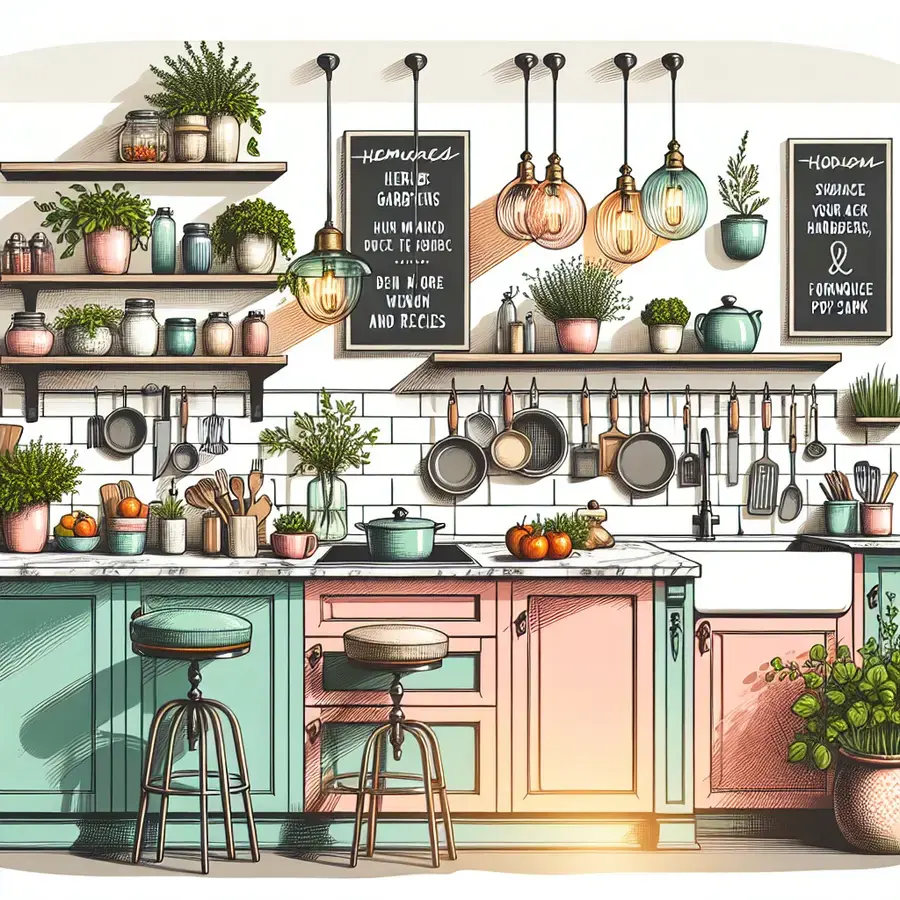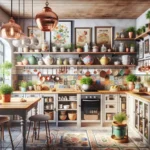The kitchen is often considered the heart of the home, and its decor plays a significant role in shaping the overall ambiance and functionality of the space. Interestingly, a recent survey revealed that 75% of homeowners consider their kitchen’s aesthetic appeal when deciding on renovation projects.
With years of experience in crafting engaging content, we’ve developed a keen eye for what makes a kitchen truly special. In this article, we’ll dive into the world of kitchen decor, exploring the latest trends, must-have elements, and expert tips to help you create a space that’s both beautiful and functional. Whether you’re looking to refresh your existing kitchen or start from scratch, our in-depth comparison and review will provide you with the insights and inspiration you need to bring your vision to life. By examining various kitchen decor styles and elements, we’ll help you make informed decisions to create a kitchen that perfectly balances form and function.
📋
📚 Table of Contents
-
1
## Elevating Your Kitchen: A Comprehensive Decor Comparison Guide -
2
## Understanding Your Kitchen Style: A Framework for Comparison -
3
## Layout and Space Planning: Maximizing Functionality -
4
## Color Schemes and Materials: Aesthetic Considerations -
5
## Lighting Design: Task, Ambient, and Accent Lighting Compared -
6
## Storage Solutions: Cabinets, Shelves, and Drawers Analyzed -
7
## Countertop Options: Durability, Maintenance, and Style -
8
## Budgeting for Kitchen Decor: Cost-Effective Strategies -
9
## Applying Your Kitchen Decor: From Modern to Traditional Use Cases -
10
## Making the Most of Your Investment: Value-Driven Recommendations -
11
## The Final Decision: Weighing Style, Function, and Budget -
12
## Bringing It All Together: A Kitchen Decor Roadmap for Success
## Elevating Your Kitchen: A Comprehensive Decor Comparison Guide
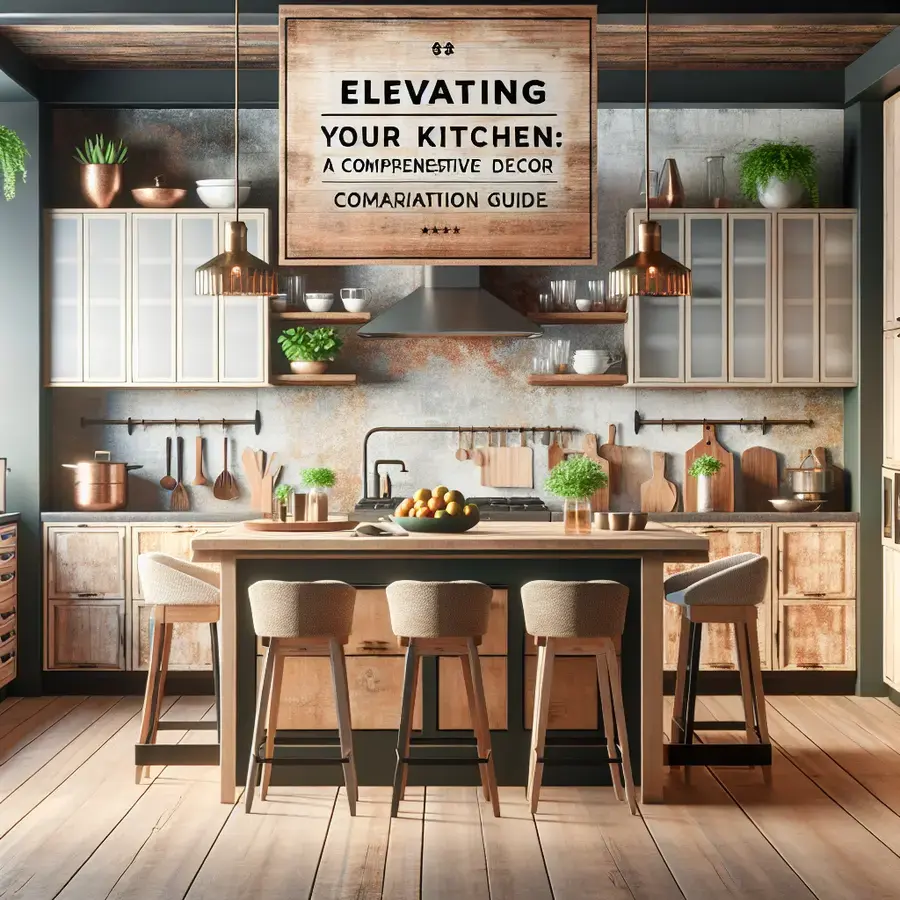
Transforming your kitchen into a warm and inviting space requires a thoughtful approach to decor. With numerous styles and elements to consider, creating a cohesive look can be daunting. In this comprehensive guide, we’ll compare key kitchen decor elements, providing you with expert insights and actionable advice to elevate your kitchen.
Understanding Kitchen Decor Styles
Before diving into specific decor elements, it’s essential to understand the various kitchen styles that can guide your design decisions. Popular styles include:
- Modern: Characterized by clean lines, minimal ornamentation, and an emphasis on functionality.
- Traditional: Features classic elements, such as ornate details, warm colors, and rich textures.
- Farmhouse: Combines rustic charm with modern convenience, often incorporating vintage or repurposed elements.
- Coastal: Inspired by the ocean, this style often includes light colors, natural textures, and nautical accents.
Key Decor Elements: A Comparison
To create a cohesive look, it’s crucial to balance various decor elements. Let’s compare some key components:
Countertops
Countertops play a significant role in kitchen decor. Popular materials include:
- Granite: Durable and resistant to heat, granite offers a sophisticated look.
- Quartz: Engineered quartz provides a consistent appearance and low maintenance.
- Butcher Block: Wooden countertops add warmth and a natural touch.
When choosing countertops, consider factors like durability, maintenance, and style.
Lighting
Effective lighting can greatly impact the ambiance of your kitchen. Compare the following options:
- Recessed Lighting: Provides a sleek, modern look and can be used to highlight specific areas.
- Pendant Lighting: Adds a decorative touch and can be used to create a focal point.
- Under-Cabinet Lighting: Enhances task lighting and creates a warm glow.
By understanding the various kitchen decor styles and comparing key elements, you can create a harmonious and functional space that reflects your personal taste. Consider your lifestyle, preferences, and the overall aesthetic you want to achieve when making design decisions.
According to a National Kitchen and Bath Association (NKBA) study, 73% of homeowners consider the kitchen the most important room in the house. By investing time and effort into your kitchen decor, you can not only enhance the aesthetic appeal but also increase the value of your home.
## Understanding Your Kitchen Style: A Framework for Comparison
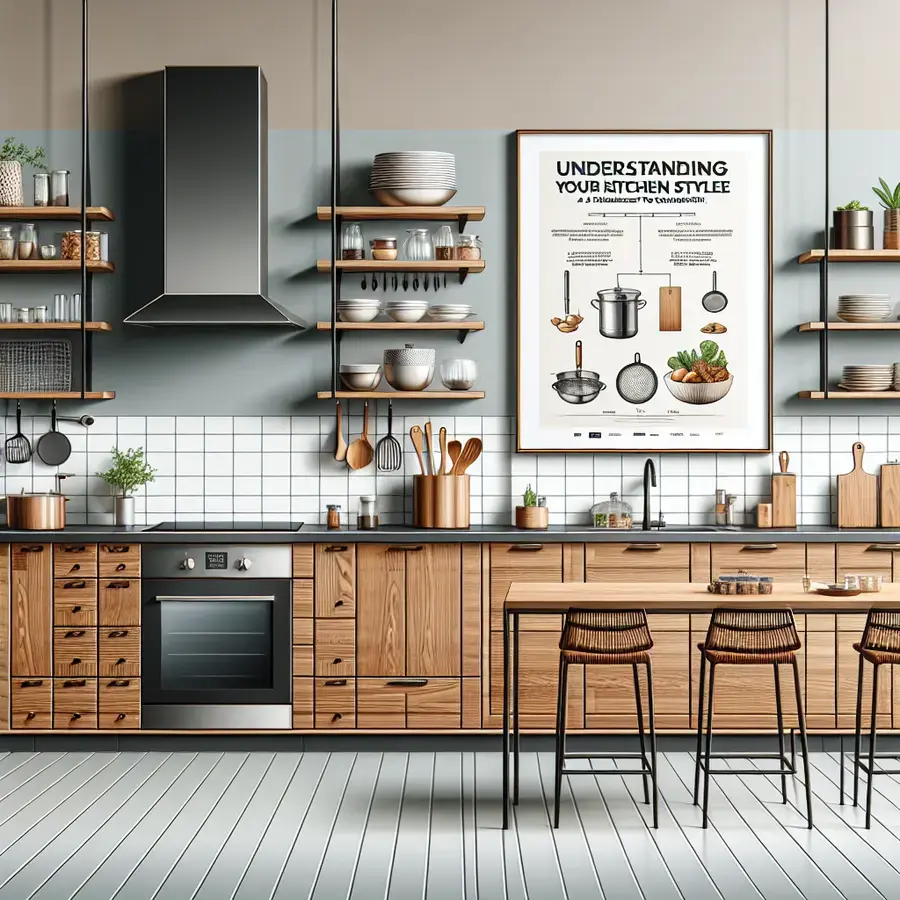
Defining your kitchen style is a crucial step in creating a space that reflects your personal taste and meets your functional needs. With numerous styles to choose from, it can be overwhelming to determine which one suits you best. In this section, we’ll provide a framework for understanding your kitchen style and comparing different decor options.
Identifying Your Kitchen Style
To identify your kitchen style, consider the following factors:
- Personal taste: Think about the styles you admire, such as modern, traditional, or rustic.
- Lifestyle: Consider your cooking habits, entertaining style, and the amount of time you spend in the kitchen.
- Kitchen layout: Take into account the size, shape, and configuration of your kitchen.
- Budget: Determine how much you’re willing to invest in your kitchen decor.
Some popular kitchen styles include:
- Traditional: Features classic elements, such as ornate cabinetry, decorative molding, and warm color schemes.
- Farmhouse: Incorporates rustic elements, like exposed beams, vintage fixtures, and country-inspired decor.
- Coastal: Inspired by the beach, this style often includes light colors, natural textures, and nautical accents.
Comparing Kitchen Styles
Once you’ve identified your kitchen style, it’s time to compare different decor options. Consider the following elements:
- Cabinetry: Compare different materials, such as wood, laminate, or glass.
- Countertops: Evaluate options like granite, quartz, or butcher block.
- Lighting: Assess the impact of different lighting fixtures, such as pendant lights or under-cabinet lighting.
- Color scheme: Consider the mood and atmosphere created by different color palettes.
For example, a modern kitchen might feature sleek, high-gloss cabinetry, while a traditional kitchen might incorporate ornate, raised-panel cabinets. By comparing these elements, you can create a cohesive look that reflects your personal style.
According to a survey by the National Kitchen and Bath Association, 73% of homeowners consider the style of their kitchen to be a major factor in their design decisions. By understanding your kitchen style and comparing different decor options, you can create a space that meets your needs and exceeds your expectations.
## Layout and Space Planning: Maximizing Functionality
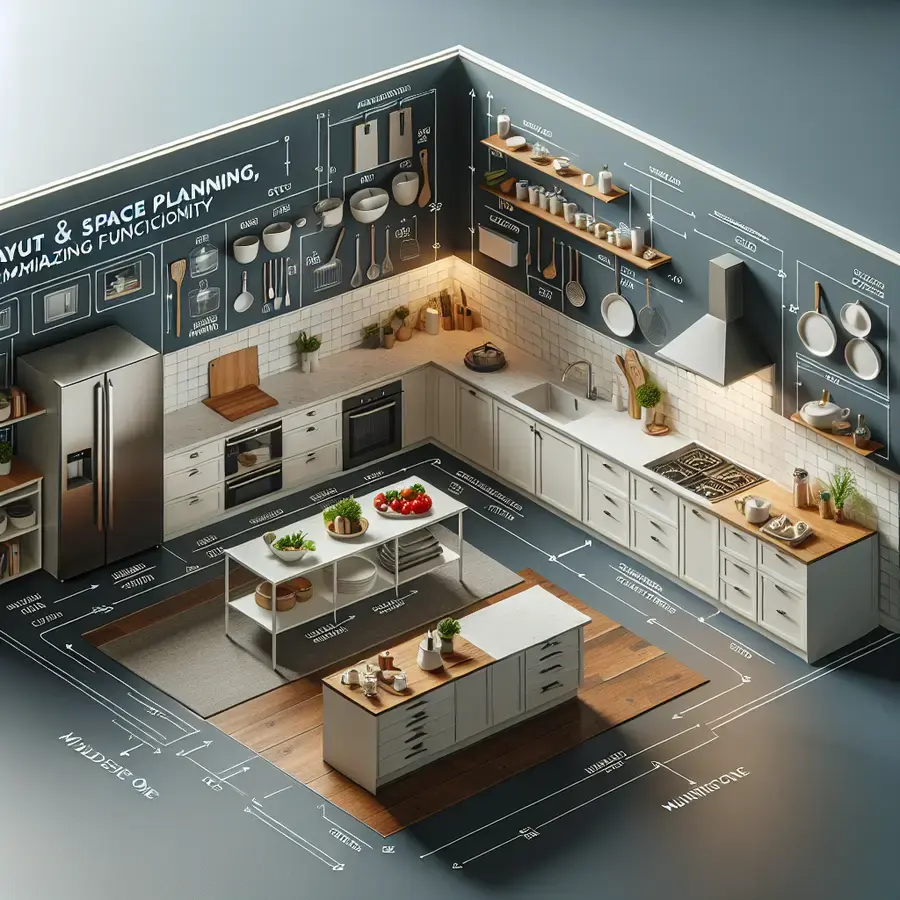
Effective kitchen design is not just about aesthetics; it’s also about creating a functional space that meets your needs. A well-planned kitchen layout can significantly enhance the overall cooking experience, making meal preparation more efficient and enjoyable. In this section, we’ll explore the key principles of layout and space planning, providing you with expert insights and actionable tips to maximize your kitchen’s functionality.
### Understanding Kitchen Work Zones
A kitchen can be divided into distinct work zones, each serving a specific purpose. The three primary zones are:
- The Cooking Zone: This area is centered around your cooktop, oven, and microwave. It’s where you’ll spend most of your time when preparing meals.
- The Preparation Zone: This zone is typically where you’ll chop, dice, and prep ingredients. It’s often associated with your countertops and sink.
- The Storage Zone: This includes your pantry, cabinets, and drawers, where you store ingredients, cookware, and utensils.
By understanding these zones, you can design a layout that minimizes movement between them, streamlining your cooking process. For instance, the “work triangle” concept suggests that the sink, stove, and refrigerator should form the points of a triangle, with each leg measuring between 4 and 9 feet. This configuration allows for efficient movement between the primary work areas.
### Optimizing Cabinet and Countertop Space
Cabinets and countertops are crucial elements in kitchen design, providing storage and workspace. To maximize their functionality:
- Choose the Right Cabinet Layout: Consider a mix of wall-mounted and base cabinets to optimize storage. Incorporate features like pull-out shelves, lazy susans, and drawer dividers to enhance accessibility.
- Select Countertops Wisely: Ensure you have sufficient countertop space for food preparation. Consider a kitchen island or peninsula to add additional workspace and storage.
- Incorporate Vertical Space: Make the most of your kitchen’s vertical space by installing tall cabinets or a pot rack, keeping frequently used items within easy reach.
A study by the National Kitchen and Bath Association found that 83% of homeowners consider storage to be a critical factor in kitchen design. By optimizing your cabinet and countertop space, you can create a more efficient and enjoyable cooking environment.
### Case Study: Galley Kitchen Layout
A galley kitchen, characterized by two parallel countertops with a walkway in between, is a popular choice for smaller kitchens. To maximize functionality in a galley kitchen:
- Install cabinets and appliances along the walls to create a clear pathway.
- Use a narrow kitchen cart or island to provide additional counter space without obstructing the walkway.
- Select a light color scheme to create the illusion of more space.
By applying these principles and considering your specific kitchen layout, you can create a functional and beautiful space that meets your needs and enhances your cooking experience.
## Color Schemes and Materials: Aesthetic Considerations
When it comes to kitchen decor, the right color scheme and materials can elevate the space from functional to fabulous. A well-designed kitchen can increase the value of your home and make cooking and entertaining a joy. In this section, we’ll explore the key aesthetic considerations for choosing a color scheme and materials that will make your kitchen shine.
### Color Schemes: Creating a Cohesive Look
A cohesive color scheme is essential to creating a beautiful kitchen. Here are some popular color schemes to consider:
- Monochromatic: Using different shades of the same color to create a cohesive look. For example, a white kitchen with varying shades of white for the cabinets, countertops, and backsplash.
- Complementary: Pairing colors that are opposite each other on the color wheel, such as blue and orange. This creates a bold and dynamic look.
- Analogous: Using colors that are next to each other on the color wheel, such as blue, green, and yellow. This creates a harmonious and soothing atmosphere.
When choosing a color scheme, consider the 60-30-10 rule: 60% of the kitchen should be a dominant color, 30% a secondary color, and 10% an accent color. This will create a balanced and visually appealing space.
### Materials: Texture and Visual Interest
The materials you choose for your kitchen can add texture and visual interest to the space. Here are some popular materials to consider:
- Natural Stone: Granite, marble, and quartz are popular choices for countertops and backsplashes. They add a touch of luxury and sophistication to the kitchen.
- Wood: Wooden cabinets, flooring, and accents can add warmth and coziness to the kitchen.
- Metallic: Metallic accents, such as stainless steel or copper, can add a touch of glamour and sophistication to the kitchen.
When choosing materials, consider the durability and maintenance requirements. For example, natural stone requires periodic sealing, while wooden cabinets require regular polishing.
A study by the National Kitchen and Bath Association found that 75% of homeowners consider the overall aesthetic of their kitchen when making design decisions. By choosing a color scheme and materials that work well together, you can create a beautiful and functional kitchen that meets your needs and increases the value of your home.
## Lighting Design: Task, Ambient, and Accent Lighting Compared
Effective kitchen lighting is a crucial aspect of kitchen decor, enhancing both functionality and aesthetics. A well-designed lighting plan incorporates a layered approach, combining task, ambient, and accent lighting to create a harmonious and functional space. Understanding the distinct roles of each lighting type is essential for achieving a balanced and inviting kitchen environment.
Task Lighting: Illuminating Functionality
Task lighting is designed to illuminate specific areas where tasks are performed, such as countertops, sinks, and cooking ranges. This type of lighting is typically bright and focused, reducing eye strain and improving safety. Examples of task lighting in the kitchen include:
- Under-cabinet lighting: LED strips or puck lights installed beneath upper cabinets to illuminate countertops.
- Pendant lights: Suspended above islands or cooking ranges to provide focused lighting.
- Recessed lighting: Installed in ceilings to shine down on specific areas, such as cooking stations.
Ambient Lighting: Setting the Overall Mood
Ambient lighting provides overall illumination to the kitchen, establishing the atmosphere and mood. It is typically softer and more diffused than task lighting. Ambient lighting can be achieved through:
- Ceiling fixtures: Flush-mount or semi-flush-mount fixtures that distribute light evenly throughout the space.
- Table lamps or sconces: Used in kitchen dining areas or breakfast nooks to create a warm ambiance.
- Natural light: Maximizing natural light through windows and skylights can significantly contribute to ambient lighting.
Accent Lighting: Highlighting Design Elements
Accent lighting is used to draw attention to specific design elements or features within the kitchen, such as architectural details, decorative objects, or display areas. This type of lighting adds depth and visual interest to the space. Examples include:
- LED tape lights: Used to highlight the edges of shelves, cabinets, or display niches.
- Picture lights: Installed above or below artwork or decorative pieces to create a focal point.
- Cabinet lighting: Glass shelving or display cabinets can be illuminated from within to showcase decorative items.
A well-balanced kitchen lighting design integrates task, ambient, and accent lighting to create a functional, inviting, and visually appealing space. By understanding the distinct roles of each lighting type and incorporating them effectively, homeowners can achieve a kitchen that is both beautiful and functional.
According to the Illuminating Engineering Society (IES), a layered lighting approach can improve the overall lighting quality and reduce energy consumption. By combining task, ambient, and accent lighting, homeowners can create a kitchen environment that is not only aesthetically pleasing but also safe, efficient, and functional.
## Storage Solutions: Cabinets, Shelves, and Drawers Analyzed
Effective kitchen storage is crucial for maintaining a clutter-free and functional cooking space. In this section, we’ll dive into the world of cabinets, shelves, and drawers, analyzing their benefits, drawbacks, and ideal applications to help you make informed decisions for your kitchen decor.
### Cabinet Storage: The Backbone of Kitchen Organization
Cabinets are a staple in kitchen design, offering ample storage for cookware, dishes, and food. When selecting cabinets, consider the following factors:
- Material: Solid wood, MDF, or a combination of both. Solid wood cabinets are durable and can be stained to match any decor, while MDF is more budget-friendly and resistant to warping.
- Style: Choose from a range of styles, including flat-panel, raised-panel, and shaker. Each style offers a unique aesthetic and can greatly impact the overall look of your kitchen.
- Configuration: Consider the layout of your cabinets, including the number of shelves, drawers, and compartments. Soft-close drawers and doors can add a touch of luxury to your kitchen.
### Shelves: Adding Visual Interest and Accessibility
Open shelving has become increasingly popular in modern kitchen design, offering a sleek and accessible storage solution. When incorporating shelves into your kitchen decor, keep the following tips in mind:
- Material selection: Glass, wood, or metal shelves can add a touch of sophistication to your kitchen. Consider the style and material of your cabinets and countertops when making your selection.
- Placement: Strategically place shelves to maximize accessibility and visual appeal. Corner shelves can be particularly effective in utilizing dead space.
- Height and depth: Ensure shelves are at a comfortable height and depth to avoid straining or overreaching.
### Drawers: The Ultimate in Convenience and Organization
Drawers offer a convenient and organized storage solution for kitchen utensils, cookware, and other essentials. When designing your kitchen drawers, consider the following:
- Divided inserts: Incorporate dividers or inserts to keep contents organized and easy to access.
- Soft-close mechanisms: Soft-close drawers provide a smooth and quiet closing action, reducing wear and tear on the drawer and its contents.
- Deep drawers: Consider incorporating deep drawers for storing larger items, such as pots and pans.
By carefully analyzing your storage needs and incorporating a mix of cabinets, shelves, and drawers, you can create a kitchen that is both functional and visually appealing. According to a survey by the National Kitchen and Bath Association, 75% of homeowners consider storage to be a top priority when designing their kitchen. By prioritizing effective storage solutions, you can create a kitchen that meets your needs and exceeds your expectations.
## Countertop Options: Durability, Maintenance, and Style
When it comes to kitchen decor, one of the most critical decisions is choosing the right countertop. The countertop is not only a functional surface but also a significant design element that can make or break the aesthetic of the kitchen. With numerous options available, selecting the perfect countertop can be overwhelming. In this section, we’ll delve into the world of countertops, exploring durability, maintenance, and style to help you make an informed decision.
### Durability Considerations
Durability is a crucial factor when selecting a countertop. Different materials offer varying levels of resistance to scratches, heat, and stains. For instance:
- Granite: Known for its exceptional durability, granite is resistant to scratches and heat. However, it requires periodic sealing to maintain its stain resistance.
- Quartz: Engineered quartz is another durable option, offering excellent resistance to scratches and stains. It’s also non-porous, making it ideal for busy kitchens.
- Laminate: While laminate countertops are more budget-friendly, they’re less durable and more prone to scratches and heat damage.
### Maintenance Requirements
Maintenance is another essential aspect to consider. Some countertops require more upkeep than others:
- Porous surfaces: Natural stone countertops like marble and granite need periodic sealing to prevent stains.
- Non-porous surfaces: Quartz and solid surface countertops are relatively low maintenance, requiring only occasional cleaning.
- Special care: Wood countertops, for example, need regular oiling to maintain their appearance and prevent cracking.
### Style and Aesthetics
Beyond functionality, the countertop is a significant design element. Consider the overall style and aesthetic you want to achieve in your kitchen:
- Modern look: Sleek, matte-finish quartz or solid surface countertops can create a contemporary look.
- Traditional feel: Warm, natural stone like granite or soapstone can add a classic touch to your kitchen.
- Unique statement: Exotic materials like copper or reclaimed wood can create a one-of-a-kind statement piece.
Ultimately, the right countertop for your kitchen will depend on your lifestyle, budget, and personal style. By considering durability, maintenance, and aesthetics, you can make an informed decision that meets your needs and enhances the overall look of your kitchen.
## Budgeting for Kitchen Decor: Cost-Effective Strategies
Creating a beautiful and functional kitchen doesn’t have to break the bank. With a little planning and creativity, you can achieve your kitchen decor goals without overspending. Here are some cost-effective strategies to help you budget for your kitchen decor.
### Assess Your Kitchen’s Needs
Before you start decorating, take stock of your kitchen’s needs. Consider the layout, lighting, and storage. Identify areas that need improvement and prioritize your spending accordingly. For example, if your kitchen lacks sufficient storage, consider investing in a kitchen cart or island.
### Cost-Effective Decorating Ideas
- Repurpose existing items: Give new life to old furniture or decorative items by repurposing them. For instance, an old ladder can become a pot rack or a unique storage solution.
- Shop second-hand: Thrift stores, Craigslist, or Facebook Marketplace often have gently used kitchen decor items at a fraction of the cost of new ones.
- DIY projects: Take on simple DIY projects like painting cabinets, creating a kitchen sign, or making decorative accessories.
- Opt for affordable materials: Choose cost-effective materials like laminate or ceramic tile instead of high-end options like granite or marble.
### Budgeting Tips
To stay within budget, consider the following tips:
- Set a realistic budget: Determine how much you’re willing to spend and stick to it.
- Prioritize needs over wants: Distinguish between essential items and decorative elements.
- Shop during sales: Keep an eye out for discounts and promotions at home decor stores.
- Consider the 60-30-10 rule: Allocate 60% of your budget to essential items, 30% to secondary elements, and 10% to decorative accessories.
According to a survey by the National Kitchen and Bath Association, the average cost of a kitchen renovation is around $25,000. However, with careful planning and budgeting, it’s possible to achieve a beautiful kitchen makeover for a fraction of that cost. For example, a homeowner in a recent case study spent just $5,000 to update their kitchen with new cabinets, countertops, and lighting.
By implementing these cost-effective strategies, you can create a stunning kitchen that fits your budget and meets your needs.
## Applying Your Kitchen Decor: From Modern to Traditional Use Cases
When it comes to kitchen decor, the design possibilities are endless. Whether you’re aiming for a sleek, modern look or a warm, traditional feel, the right decor can elevate your kitchen’s functionality and aesthetic appeal. In this section, we’ll explore various kitchen decor styles and provide actionable insights on how to apply them effectively.
### Modern Kitchen Decor
Modern kitchen decor is characterized by clean lines, minimal ornamentation, and an emphasis on functionality. To achieve a modern look, consider the following elements:
- Monochromatic color schemes: A single-color palette can create a cohesive, streamlined appearance.
- Industrial materials: Exposed brick, metal accents, and reclaimed wood can add an edgy, modern touch.
- Smart storage solutions: Incorporate hidden storage, such as drawer organizers and cabinet inserts, to maintain a clutter-free environment.
A case study on modern kitchen decor is the Houzz “Kitchen of the Year” winner, which featured a sleek, all-white design with industrial-chic accents. The result was a highly functional and visually stunning space.
### Traditional Kitchen Decor
Traditional kitchen decor, on the other hand, is often associated with warmth, comfort, and classic design elements. To create a traditional look, consider the following:
- Warm color palettes: Earthy tones, such as beige, brown, and taupe, can evoke a cozy atmosphere.
- Ornate details: Incorporate decorative molding, crown molding, and intricate hardware to add visual interest.
- Classic materials: Use natural materials like wood, stone, and brick to create a warm, inviting ambiance.
According to a survey by the National Association of the Remodeling Industry (NARI), 63% of homeowners prefer traditional kitchen designs, citing a desire for warmth and coziness.
### Blending Modern and Traditional Styles
For those who can’t decide between modern and traditional styles, a blended approach can be the perfect solution. Consider combining modern materials and clean lines with traditional decorative elements, such as:
- Mixed materials: Pair modern materials like stainless steel or glass with traditional materials like wood or stone.
- Eclectic decor: Incorporate a mix of modern and traditional decorative pieces, such as a modern light fixture with traditional pendant lights.
By understanding the key elements of modern and traditional kitchen decor, you can create a space that reflects your personal style and meets your functional needs. Whether you’re renovating or simply updating your kitchen, the right decor can make all the difference.
## Making the Most of Your Investment: Value-Driven Recommendations
When it comes to kitchen decor, making the most of your investment requires a thoughtful and multi-faceted approach. To maximize the value of your kitchen renovation or design, it’s essential to consider both aesthetic and functional elements. Here, we’ll explore expert-level strategies for creating a kitchen that is not only beautiful but also efficient and cost-effective.
### Assessing Your Kitchen’s Value Proposition
Before making any design decisions, it’s crucial to assess your kitchen’s value proposition. This involves considering factors such as:
- The overall layout and workflow of your kitchen
- The quality and condition of your appliances, fixtures, and finishes
- The level of natural light and ventilation
- The incorporation of smart technology and energy-efficient features
### Maximizing ROI with Timeless Design
A well-designed kitchen can recoup a significant portion of its cost at resale. To maximize your return on investment (ROI), focus on timeless design elements that won’t quickly go out of style. Some examples include:
- High-quality materials: Invest in durable, low-maintenance materials like quartz countertops, hardwood flooring, and stainless steel appliances.
- Classic color schemes: Stick to neutral color palettes that won’t date quickly, such as whites, grays, and earth tones.
- Simple, clean lines: Avoid overly ornate or trendy design elements that may quickly become outdated.
### Enhancing Functionality and Efficiency
In addition to aesthetic considerations, a well-designed kitchen should also prioritize functionality and efficiency. Some strategies for achieving this include:
- Optimizing your kitchen’s workflow: Consider the “work triangle” concept, which positions the sink, stove, and refrigerator in a triangular formation to minimize movement and maximize efficiency.
- Incorporating smart storage: Invest in clever storage solutions like pull-out pantries, drawer dividers, and pot racks to keep your kitchen organized and clutter-free.
- Selecting energy-efficient appliances: Choose appliances with high Energy Star ratings to reduce your energy consumption and lower your utility bills.
By incorporating these value-driven recommendations into your kitchen design, you can create a space that is both beautiful and functional, while also maximizing your return on investment. According to the National Association of Realtors, a well-designed kitchen renovation can recoup up to 102% of its cost at resale, making it a savvy investment for homeowners.
## The Final Decision: Weighing Style, Function, and Budget
When it comes to finalizing your kitchen decor, it’s essential to strike a balance between style, function, and budget. As you’ve navigated through various design options and considered different elements, now is the time to make a decision that aligns with your priorities. In this section, we’ll explore how to weigh these factors effectively to create a kitchen that is both beautiful and functional.
Assessing Your Priorities
To make an informed decision, start by assessing your priorities. Ask yourself:
- What is my primary use for the kitchen? (e.g., cooking, entertaining, family gatherings)
- What style or aesthetic do I want to achieve? (e.g., modern, traditional, minimalist)
- What is my budget for the project?
By understanding your needs and preferences, you can begin to make decisions that align with your goals. For instance, if you’re an avid cook, you may prioritize functional elements like ample counter space and high-quality appliances. On the other hand, if you’re looking to create a social hub, you may focus on designing a layout that fosters interaction and conversation.
Balancing Style and Function
A well-designed kitchen should balance style and function. Consider the following examples:
- Storage solutions: Incorporate stylish storage options like glass-front cabinets or decorative baskets to keep your kitchen organized and visually appealing.
- Lighting: Use a combination of task lighting (e.g., under-cabinet lighting) and ambient lighting (e.g., pendant lights) to create a functional and inviting atmosphere.
- Countertops: Choose a durable, low-maintenance material like quartz or granite that also complements your desired style.
According to a survey by the National Kitchen and Bath Association (NKBA), 73% of homeowners consider durability and maintenance to be key factors when selecting kitchen materials. By prioritizing both style and function, you can create a kitchen that meets your needs and enhances your overall living experience.
Budget Considerations
Finally, consider your budget and how it impacts your design decisions. Here are some actionable insights:
- Set a realistic budget: Determine how much you’re willing to spend and allocate funds accordingly.
- Prioritize needs over wants: Focus on essential elements like functional appliances and durable materials, and then allocate remaining funds to discretionary items like decorative accessories.
- Explore cost-effective alternatives: Consider alternatives like refacing cabinets instead of replacing them, or opting for a more affordable countertop material.
By carefully weighing style, function, and budget, you can create a kitchen that not only meets your needs but also enhances your home’s value and aesthetic appeal.
## Bringing It All Together: A Kitchen Decor Roadmap for Success
Creating a beautiful and functional kitchen requires careful planning and attention to detail. In this section, we’ll provide a comprehensive roadmap to help you bring your kitchen decor vision to life. By following these expert tips and guidelines, you’ll be able to create a stunning kitchen that reflects your personal style and meets your needs.
### Define Your Kitchen Style
Before you start decorating, it’s essential to define your kitchen style. Consider the overall aesthetic you want to achieve, such as modern, traditional, or rustic. Think about the colors, textures, and materials that will dominate your kitchen. For example, a modern kitchen might feature sleek cabinets, quartz countertops, and stainless steel appliances.
### Key Elements to Consider
When planning your kitchen decor, there are several key elements to consider. These include:
- Lighting: A combination of overhead lighting, task lighting, and ambient lighting can create a warm and inviting atmosphere.
- Color Scheme: Choose a color scheme that reflects your personal style and complements your kitchen’s fixtures and appliances.
- Storage and Organization: Optimize your kitchen’s storage and organization with clever cabinetry, drawers, and shelving.
- Textiles and Patterns: Add texture and visual interest with rugs, towels, and other textiles.
### A Step-by-Step Guide to Kitchen Decor Success
To help you achieve your kitchen decor goals, follow these steps:
- Assess Your Kitchen’s Layout: Take stock of your kitchen’s layout, including the location of doors, windows, and plumbing fixtures.
- Set a Budget: Determine how much you’re willing to spend on your kitchen decor project.
- Choose a Color Scheme: Select a color scheme that reflects your personal style and complements your kitchen’s fixtures and appliances.
- Select Materials and Finishes: Choose materials and finishes that are durable, easy to clean, and visually appealing.
- Add Decorative Elements: Incorporate decorative elements, such as artwork, plants, or accessories, to add personality to your kitchen.
By following this roadmap and considering the key elements outlined above, you’ll be well on your way to creating a beautiful and functional kitchen that you’ll love for years to come. According to a survey by the National Kitchen and Bath Association, 75% of homeowners consider the kitchen to be the most important room in the house. By investing time and effort into your kitchen decor, you can create a space that is both beautiful and functional.
